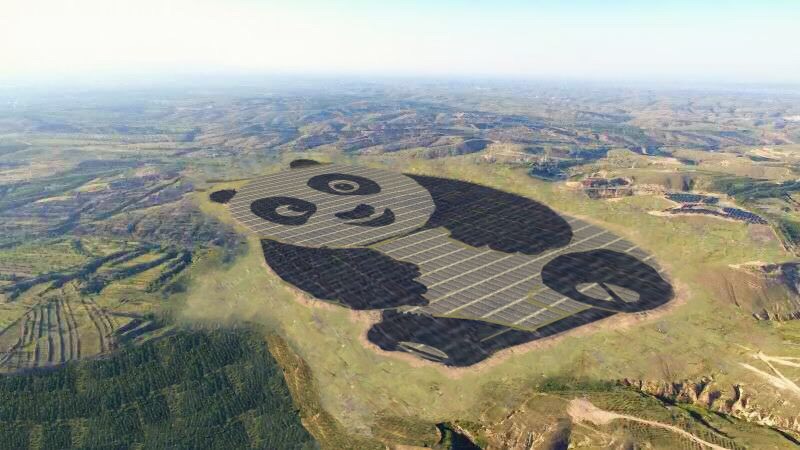In 2018, the Hong Kong-listed developer recorded revenue and EBITDA of around CNY 2,108 million and CNY 1,772 million, respectively — both representing increases on its results for the preceding year. It primarily attributed these gains to the expansion of its installed portfolio, both through development and acquisitions, as well as enhanced yields from its projects due to effective O&M practices. Its average tariff per kilowatt-hour was approximately CNY 0.80 in 2018.
The group added 242.3 MW of solar to its portfolio in 2018, bringing its total installed PV capacity to 2.3 GW by the end of December. The bulk of those projects are ground-mounted installations, as the group only has a small amount of rooftop capacity in its PV portfolio.
Growth in China
Panda Green said that about 96% of its operational solar projects are located in China. The country’s Inner Mongolia region is its most active market, with 330 MW of solar installed by the end of December, on top of 160 MW operated by its joint ventures.
This was followed by China’s Ningxia region and Qinghai province, where the group operates about 400 MW of capacity, divided equally between them. Shanxi province and the Xinjiang region rounded out the group’s top five biggest regional markets in China, with 170 MW and 120.2 MW, respectively.
Its subsidiaries operated 1.9 GW of capacity at 61 locations in 2018. Those installations generated about 2,577.8 GWh of electricity throughout the course of the year, up from just 1,857.85 GWh in 2017. Its joint ventures operated an additional 353.8 MW of capacity, generating about 515,530 MWh of electricity throughout the year, for a combined total of 3,192.6 GWh generated by all of the group’s solar and wind power projects.
Debt concerns
However, Panda Green also has debts of roughly CNY 22,511 million, of which about CNY 5,522 million must be repaid within the current calendar year, it said in a statement to the Hong Kong stock exchange. Throughout 2018, it raised approximately CNY 9 billion through medium-term notes, bank loans and financial leasing arrangements.
“The group will need to secure a substantial amount of funds in the foreseeable future to finance these financial obligations and capital expenditures under various contractual and other arrangements,” Panda Green said. “All the above conditions indicated the existence of a material uncertainty which may cast significant doubt on the group’s ability to continue as a going concern.”
In March, the severely indebted company sold off 82.5 MW of operational solar projects in the U.K. for £34 million, in order to settle its most immediately pressing debts. Its shareholders also agreed to issue new stock amounting to more than 68% of the company’s issued share capital, as the company is racing to pay off debts that start to become due as soon as next month, according to reports.
This content is protected by copyright and may not be reused. If you want to cooperate with us and would like to reuse some of our content, please contact: editors@pv-magazine.com.



By submitting this form you agree to pv magazine using your data for the purposes of publishing your comment.
Your personal data will only be disclosed or otherwise transmitted to third parties for the purposes of spam filtering or if this is necessary for technical maintenance of the website. Any other transfer to third parties will not take place unless this is justified on the basis of applicable data protection regulations or if pv magazine is legally obliged to do so.
You may revoke this consent at any time with effect for the future, in which case your personal data will be deleted immediately. Otherwise, your data will be deleted if pv magazine has processed your request or the purpose of data storage is fulfilled.
Further information on data privacy can be found in our Data Protection Policy.